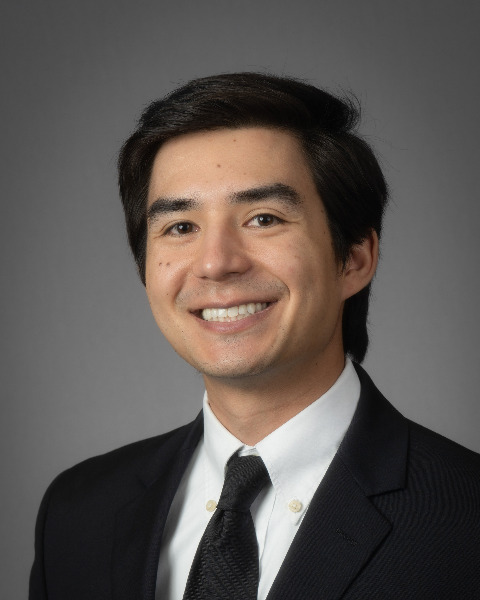Monday Poster Session
Category: General Endoscopy
P2992 - Association of Method of Gastrostomy Procedures With Post Procedural Complications and In-Hospital Mortality
Monday, October 27, 2025
10:30 AM - 4:00 PM PDT
Location: Exhibit Hall

Benjamin Lasota, BS
Texas Tech University Health Sciences Center School of Medicine
Odessa, TX
Presenting Author(s)
Benjamin Lasota, BS1, Justin Bacani, 2, Hayden Mathews, BS1, Colton Shepherd, BS1, John Garza, PhD3
1Texas Tech University Health Sciences Center School of Medicine, Odessa, TX; 2The University of Texas Permian Basin, Odessa, TX; 3Texas Tech University Health Sciences Center - Permian Basin, Odessa, TX
Introduction: A gastrostomy tube is commonly used to provide supplemental, enteral nutrition in individuals who cannot tolerate oral intake. General surgeons, interventional radiologists, and gastroenterologists place the tubes using distinct techniques including open procedures, fluoroscopic guidance, and endoscopic guidance respectively. This study compares same stay complication rates between the methods for patients undergoing emergency admissions at acute care hospitals to assess whether a specific modality confers an increased risk.
Methods: We used deidentified and publicly available data to conduct a population-based cohort study of critically ill adults admitted to acute care hospitals in Texas during 2016 Q1 through Q2 2024 with a procedure code for gastrostomy. Hospitalizations transferred to or from another hospital and non-emergency admissions were excluded. The target population was identified using International Classification of Diseases, Tenth Revisions, Procedure Coding System codes 0DH60UZ, 0DH63UZ, and 0DH64UZ selected from Clinical Classification Software Refined (CCSR) category GIS017:Gastrostomy. The primary exposure type of gastrostomy. Hemorrhage, infection, and malfunction were identified using CCSR category DIG024: Postprocedural or postoperative digestive system complications. Multivariable logistic regression was applied with results expressed as adjusted odds ratio and 95% confidence interval (aOR [95% CI]).
Results: A total of 51,288 hospitalizations from 277 hospitals were included in the study of which 46,789 (91.2%) had fluoroscopic gastrostomy, 2,305 (4.5%) had endoscopic gastrostomy, and 2,134 (4.2%) had surgical gastrostomy. Postprocedural and postoperative complications were more frequent in surgical gastrostomy [12.8% vs 6.2% (fluoroscopic) and 6.0% (endoscopic)]. In-hospital mortality was higher in surgical gastrostomy patients [13.8% vs 8.1% (fluoroscopic) and 7.8% (endoscopic)]. On adjusted analysis, compared to fluoroscopic gastrostomy, surgical gastrostomy remained associated with complication and mortality on adjusted analysis aOR 2.14 [95% CI 1.87 to 3.45] and aOR 1.87 [95% CI 1.64 to 2.15].
Discussion: We found that surgical gastrostomy was associated with higher rates of same stay complications and in-hospital mortality when compared to both fluoroscopic and endoscopic techniques. However, there was no statistically significant difference found between complication rates for the fluoroscopic and endoscopic techniques.
Disclosures:
Benjamin Lasota indicated no relevant financial relationships.
Justin Bacani indicated no relevant financial relationships.
Hayden Mathews indicated no relevant financial relationships.
Colton Shepherd indicated no relevant financial relationships.
John Garza indicated no relevant financial relationships.
Benjamin Lasota, BS1, Justin Bacani, 2, Hayden Mathews, BS1, Colton Shepherd, BS1, John Garza, PhD3. P2992 - Association of Method of Gastrostomy Procedures With Post Procedural Complications and In-Hospital Mortality, ACG 2025 Annual Scientific Meeting Abstracts. Phoenix, AZ: American College of Gastroenterology.
1Texas Tech University Health Sciences Center School of Medicine, Odessa, TX; 2The University of Texas Permian Basin, Odessa, TX; 3Texas Tech University Health Sciences Center - Permian Basin, Odessa, TX
Introduction: A gastrostomy tube is commonly used to provide supplemental, enteral nutrition in individuals who cannot tolerate oral intake. General surgeons, interventional radiologists, and gastroenterologists place the tubes using distinct techniques including open procedures, fluoroscopic guidance, and endoscopic guidance respectively. This study compares same stay complication rates between the methods for patients undergoing emergency admissions at acute care hospitals to assess whether a specific modality confers an increased risk.
Methods: We used deidentified and publicly available data to conduct a population-based cohort study of critically ill adults admitted to acute care hospitals in Texas during 2016 Q1 through Q2 2024 with a procedure code for gastrostomy. Hospitalizations transferred to or from another hospital and non-emergency admissions were excluded. The target population was identified using International Classification of Diseases, Tenth Revisions, Procedure Coding System codes 0DH60UZ, 0DH63UZ, and 0DH64UZ selected from Clinical Classification Software Refined (CCSR) category GIS017:Gastrostomy. The primary exposure type of gastrostomy. Hemorrhage, infection, and malfunction were identified using CCSR category DIG024: Postprocedural or postoperative digestive system complications. Multivariable logistic regression was applied with results expressed as adjusted odds ratio and 95% confidence interval (aOR [95% CI]).
Results: A total of 51,288 hospitalizations from 277 hospitals were included in the study of which 46,789 (91.2%) had fluoroscopic gastrostomy, 2,305 (4.5%) had endoscopic gastrostomy, and 2,134 (4.2%) had surgical gastrostomy. Postprocedural and postoperative complications were more frequent in surgical gastrostomy [12.8% vs 6.2% (fluoroscopic) and 6.0% (endoscopic)]. In-hospital mortality was higher in surgical gastrostomy patients [13.8% vs 8.1% (fluoroscopic) and 7.8% (endoscopic)]. On adjusted analysis, compared to fluoroscopic gastrostomy, surgical gastrostomy remained associated with complication and mortality on adjusted analysis aOR 2.14 [95% CI 1.87 to 3.45] and aOR 1.87 [95% CI 1.64 to 2.15].
Discussion: We found that surgical gastrostomy was associated with higher rates of same stay complications and in-hospital mortality when compared to both fluoroscopic and endoscopic techniques. However, there was no statistically significant difference found between complication rates for the fluoroscopic and endoscopic techniques.
Disclosures:
Benjamin Lasota indicated no relevant financial relationships.
Justin Bacani indicated no relevant financial relationships.
Hayden Mathews indicated no relevant financial relationships.
Colton Shepherd indicated no relevant financial relationships.
John Garza indicated no relevant financial relationships.
Benjamin Lasota, BS1, Justin Bacani, 2, Hayden Mathews, BS1, Colton Shepherd, BS1, John Garza, PhD3. P2992 - Association of Method of Gastrostomy Procedures With Post Procedural Complications and In-Hospital Mortality, ACG 2025 Annual Scientific Meeting Abstracts. Phoenix, AZ: American College of Gastroenterology.
